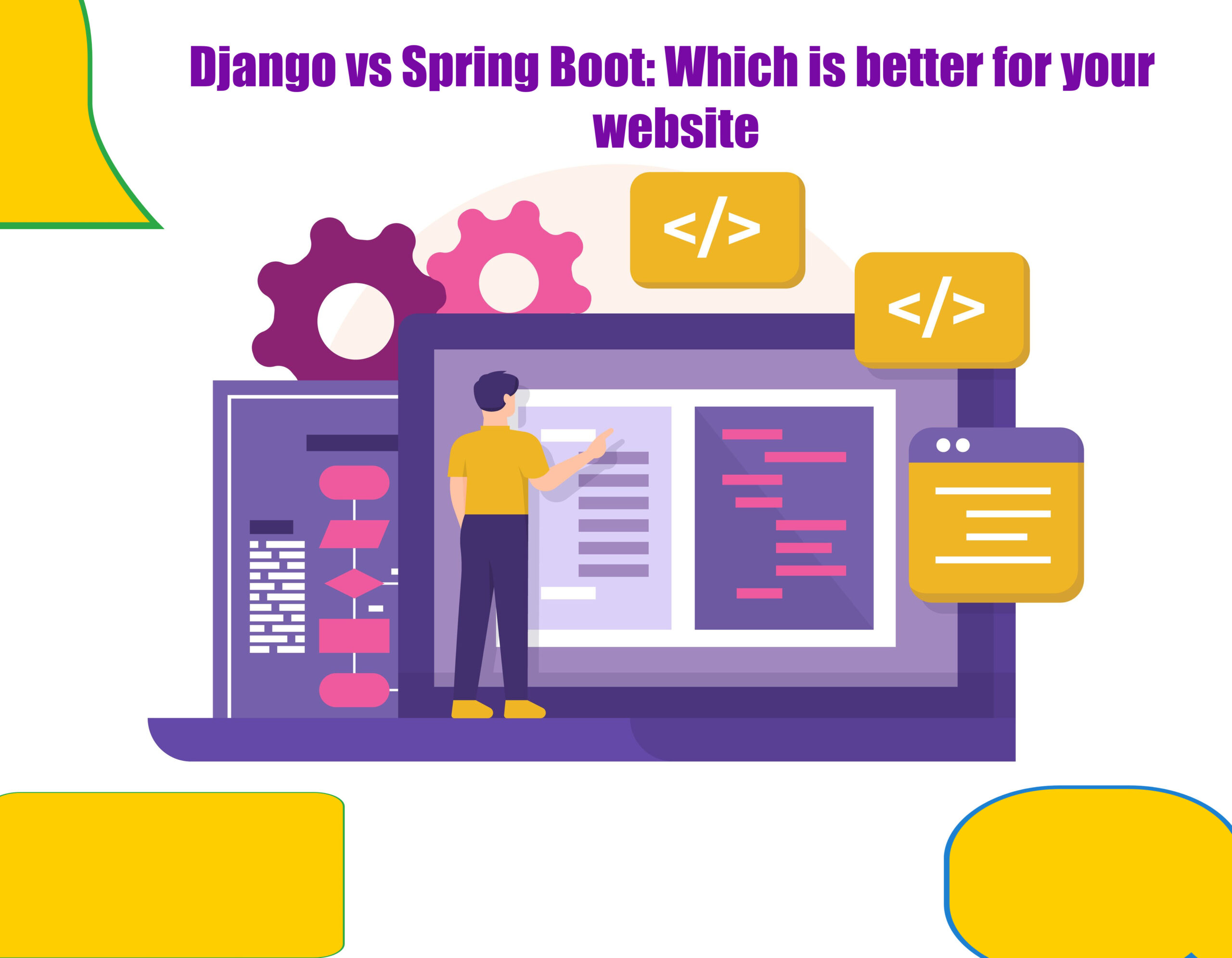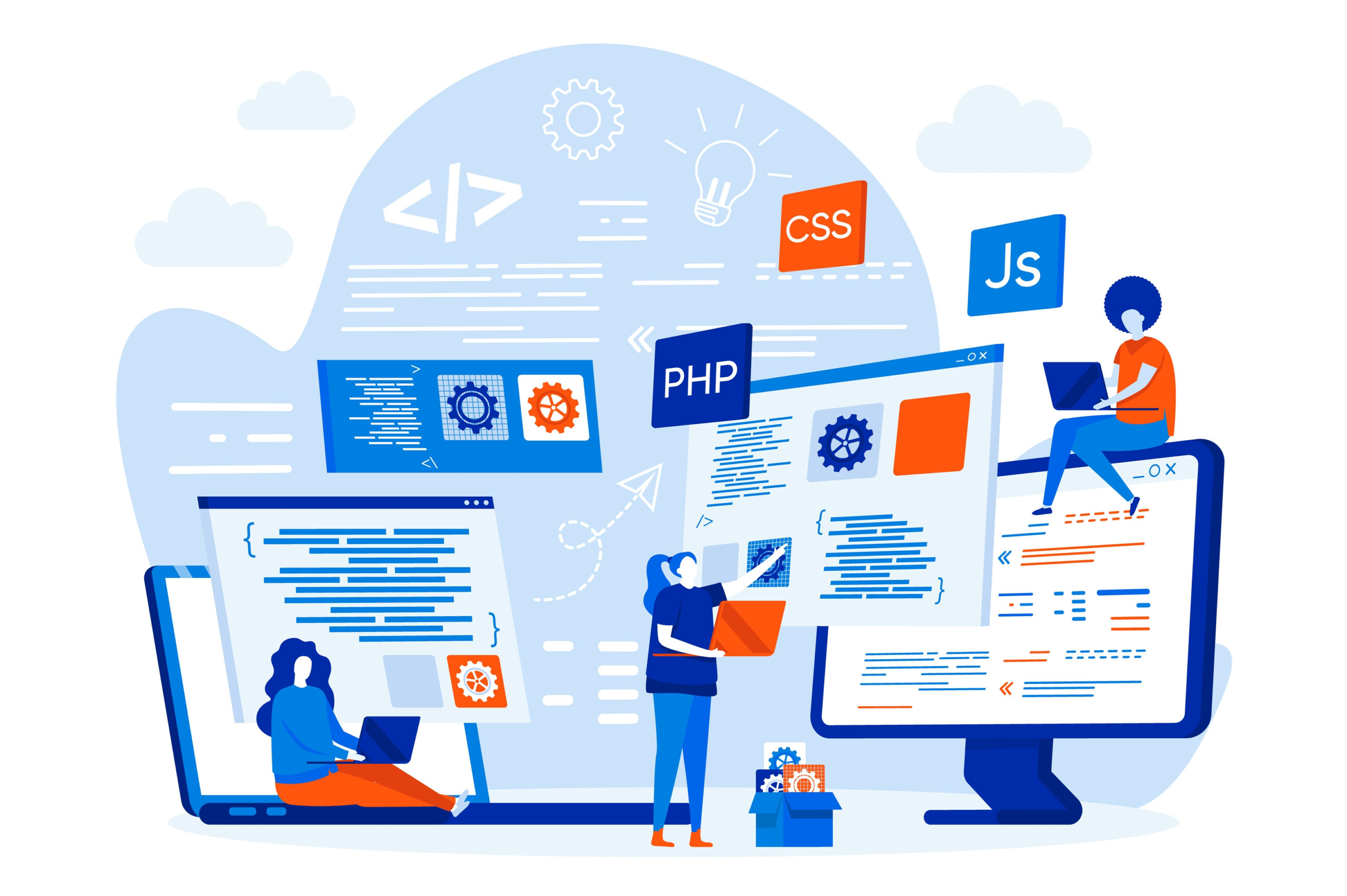Table of Contents
Introduction
Due to the constantly expanding standards of web applications and the corresponding increase in the complexity of the required technology, frameworks have become a crucial component of web development. If you can reinvent everything, it is completely unreasonable to do so for such complex processes. Because of this, employing frameworks recommended by tens of thousands of developers worldwide is a highly wise strategy for creating dynamic and sophisticated online apps. Spring Boot and Django are both well-known server-side programming frameworks used to create web applications. Spring Boot is widely used by Java developers. Django, on the other hand, is popular among Python programmers. In this blog, we will compare Django vs Spring Boot, to identify which is better for building the website.
What is Django?
Django is a high-level Python web framework that simplifies the creation of websites using Python. It performs time-consuming procedures so you can concentrate on creating web applications. A login system, database connection, and CRUD activities are just a few of the ready-to-use capabilities that are included with Django.
History of Django
Django was created between 2003 and 2005 by a web team in charge of creating and maintaining newspaper websites. After a few sites, the team began to factor out and reuse many common codes and design patterns. This common code evolved into a generic web development framework, which was open-sourced in July 2005 as the “Django” project.
Django has grown and improved since its first milestone release (1.0) in September 2008, all the way up to the recently released version 4.0. (2022). Each release added new features and bug fixes, such as support for new types of databases, template engines, and caching, as well as the addition of “generic” view functions and classes.
Features of Django
Rapid Development
Django was developed with the intention of producing a framework that would enable programmers to create web applications more quickly.
High level of security
Beyond its explicit security features, Django offers security that is strengthened by the vast experience and skill of its user base.
If you create your complete web application from scratch, you face the danger of unintentionally adding a security flaw to your module.
Because Django packages are widely used, open-source, and well-reviewed by web developers, you can have more faith that they will safeguard your data.
Open source
The web application framework Django is open source and free. The public can access it without charge. The public repository has the source code accessible for download.
Versatile
Django is a flexible framework that may be applied to the development of apps across numerous industries. Django is now being used by businesses to develop a wide range of applications, including platforms for scientific computing, social networking sites, and content management systems. It is also available in a variety of languages, and the documentation has only become better with active technological development.
Best Documentation
When compared to other open-source technologies, Django provides the greatest documentation available. Better documentation is like a very well-established library for any developer when it comes to any technology. There, he can easily look for whatever function he wants while merely devoting time to searching.
As it enables developers other than the technology’s original developers to exploit the technology effectively, documentation is one of the categories used to evaluate technologies.
Companies that are using Django
- Mozilla
- Washington times
- Spotify
Advantages of Django
The following are some of the advantages of using the Django framework:
Framework for Python
Django is a Python framework that makes it easier to create websites using Python.
User Interface for Administration
In Django, with only a few lines of code, we can create a completely functional admin interface.
Scalable
Django is an incredibly scalable framework. It can easily manage millions of users via the mobile app and the web.
Customizable
Django is configurable because it provides an architectural structure for a project.
Template System Built-In
Django comes with a built-in template for creating apps.
Security
The Django framework is useful for developing secure applications. It protects against XSS and CSRF attacks, SQL injections, clickjacking, and other threats.
Limitations of Django
- The routing pattern of Django is used to specify its URL
- Django is very rigid
- Everything is based on Django ORM
- Components are simultaneously deployed
- It needs knowledge of the entire system to work
What is Spring Boot?
Spring Boot is a Java web framework that is open source and based on microservices.
The Spring Boot framework uses prebuilt code within its codebase to create a completely configurable and fully production-ready environment. The microservice architecture gives developers a fully enclosed application, complete with embedded application servers.
History of Springboot
Spring Boot came into existence in October 2012, when a client, Mike Youngstrom, submitted a Jira ticket requesting that the spring framework be bootstrapped so that it could be quickly launched. As a result, Spring Boot was created in early 2013. Spring Boot 1.0 was released in April 2014, followed by several versions.
Features of Spring Boot
Admin Support
Admin-related functionalities for the application can be enabled with the help of Spring Boot. Applications can be remotely accessed and managed with it. It may be enabled by setting the spring application admin-enabled property to true.
YAML Support
It offers a practical method for defining a hierarchical configuration. The superset of JSON is this. YAML is supported by the SpringApplication class automatically. It is an effective alternative for properties.
Web Development
It features automatic configuration. You can quickly set up the application environment, and you don’t require an additional environment or web server to deploy your application.
Type-safe Configuration
To control and verify the application setup, a strong type-safe configuration is offered. Application configuration is constantly an important task that needs to be type-safe. This library’s annotation feature is also usable.
Security
Applications built with Spring Boot are spring-based web applications. With basic authentication enabled on all HTTP endpoints, it is therefore secure by default. To create a secure Spring Boot application, a wide variety of Endpoints are accessible.
Companies that are using Spring Boot
- Udemy
- Netflix
- Amazon
Advantages of Spring Boot
The following are some of the advantages of using the Spring Boot framework:
Easy
Java or Groovy can both be used to launch SpringBoot projects.
Time-Saving
The features such as YAML and auto-configuration help developers save time.
Reduces the number of lines of code
By removing boilerplate code, annotations, and XML setup, SpringBoot saves you time.
Simple Integration
It is easy to connect the Spring Boot project to the rest of the Spring ecosystem.
JDBC, ORM, Spring security, and so on are a few examples.
Support for Plugins
Spring Boot provides a variety of external plug-ins for developing and testing web apps.
Limitations of Spring Boot
Lack of control Large deployment files produced by Spring Boot’s numerous unneeded dependencies make it unsuitable for large-scale projects;
Many developers contend that Spring Boot is unsuitable for creating monolithic apps, even though it’s ideal for working with microservices.
Django vs Spring Boot: Basic differences
| Django | Spring Boot |
|---|---|
| Django is a free and open source | Spring Boot is free and the Opensource Platform |
| It is a high-level python framework | It is a Java web framework |
| Django is popular when compared to spring | When compared to Django, Spring Boot is less popular and mature |
| Django has a full-text feature | There is no notion of full-text feature in the spring |
| Developer community is large | Developer community is small |
| Compared to Spring, it has less security | It outshines Django, in terms of security |
| Django can handle only one request at once | Spring can handle multiple requests at once |
| It is easy to learn | It is difficult to understand and higher learning curve |
Django and Spring Boot are both open-source technologies. Spring Boot appears to be more popular than Django, with 25.8K GitHub forks and 39.8K GitHub stars. On GitHub, Django has 42,000 ratings and 18,000 forks.
Django vs Spring Boot performance
Compared to Django, Spring Boot is faster in running the code as it is written in Java. Google recommends fast websites, and it also affects a website’s ranking.
Django vs Spring Boot Benchmark
Django has a higher acceptance rate. In a comparison of Django vs Spring Boot, Django has 992 business stacks and 914 developer stacks mentioning it. Spring Boot does, however, have 333 company stacks and 615 developer stacks.
Django vs Spring Boot for Backend Development
Each framework is thoroughly examined to determine which is more appropriate Django vs. Spring Boot for Backend Development
Django – it simplifies the process of developing an enterprise web application in Python. For example, admin apps for administration, ORM for deploying against various database vendors, social auth packages for enterprise IdP authentication, and guardian packages for authorization.
Spring – from Spring Boot to Spring MVC, the configuration architecture and profile paradigm, Spring Cloud expandability, and the ease with which Spring applets can be deployed as microservices, Spring is a very convenient framework.
Django vs Spring Boot developer salary
The average Django developer salary ranges from a minimum of $80,000 to a maximum of $120,000 per year, whereas the Spring Boot developer salary ranges from $107,006 per year to a maximum of $150,084.
Conclusion
Choosing a web development stack can be difficult. We compared two of the most popular web development frameworks in this article: Django vs Spring Boot. We examined the benefits of both frameworks. It all comes down to personal preference in the end.
Spring Boot and Django are both well-known frameworks. Both frameworks have nearly identical properties. So, if you’re an expert in Java, Spring Boot is an excellent choice for your project. However, if you’re familiar with Python, Django is an excellent choice. It will be difficult to adapt to new technology if you change your technology. As a result, it will take more time.







